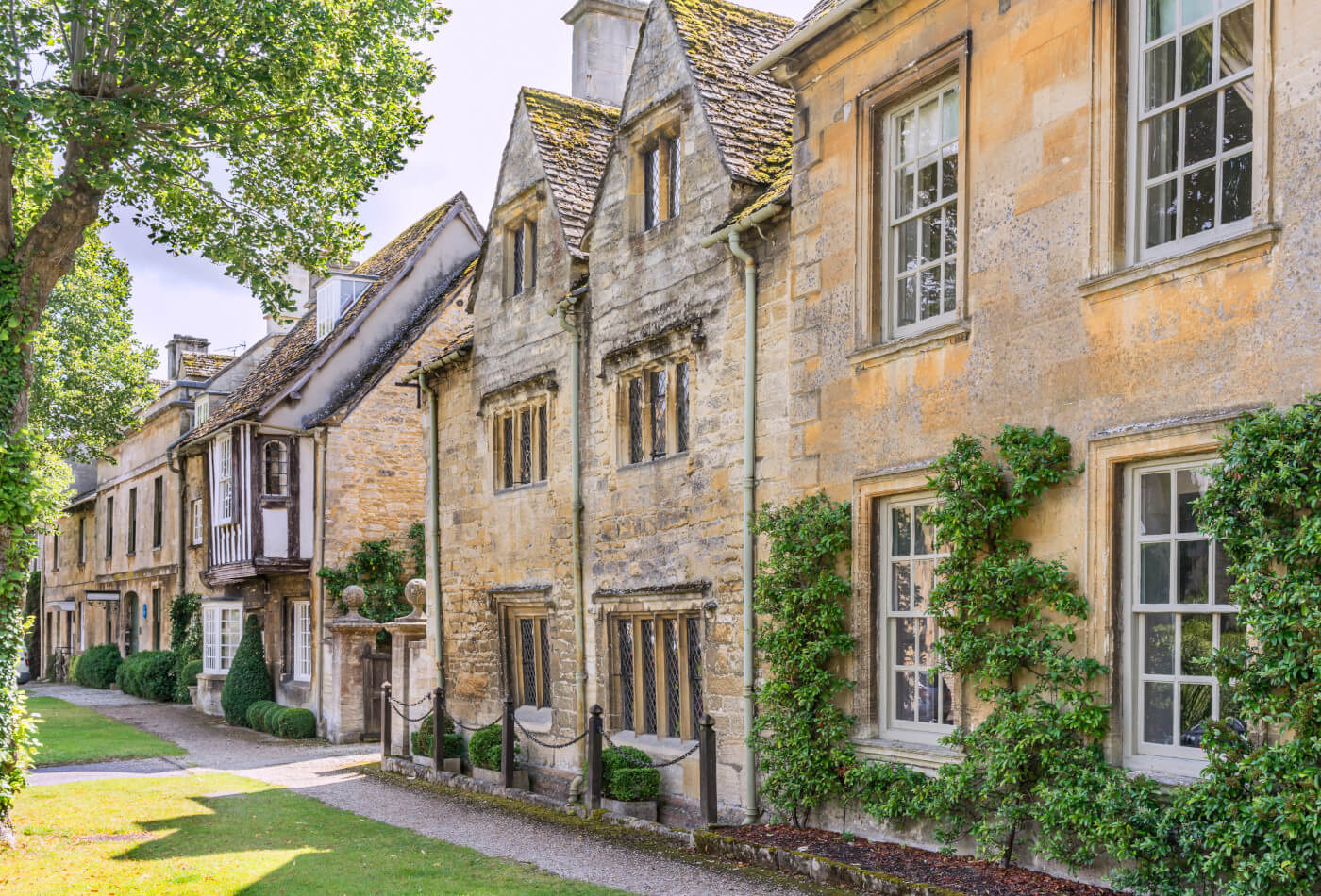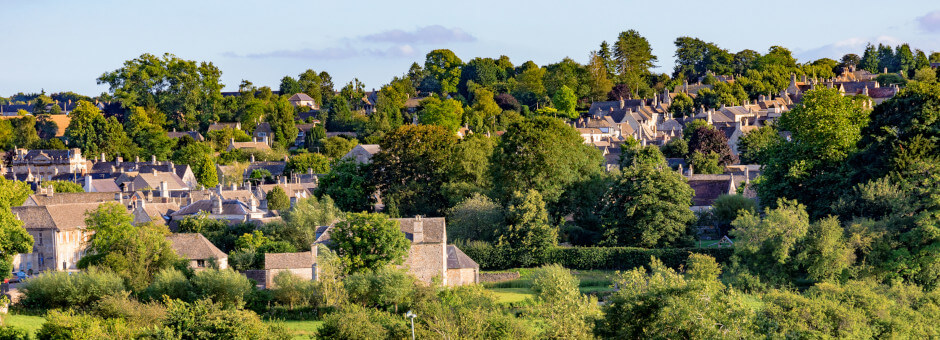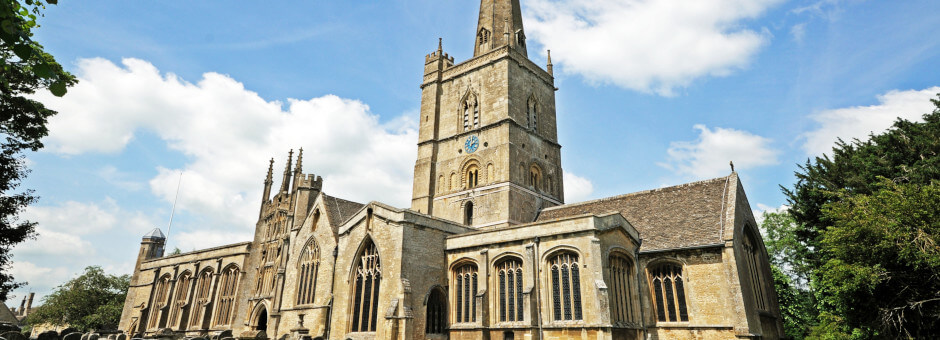The Magic of Summer Solstice at Stonehenge
Many people around the globe are preparing to celebrate the Summer Solstice at Stonehenge. This spiritual festivity praises fertility,...

Burford is a quaint South Cotswolds medieval town, lying east of Gloucester and west of Oxford. A popular destination for tourists and sightseers alike, Burford is a haven for those who love browsing amongst antique shops, stopping for tea in the high street, or generally just relaxing in this peaceful town. Burford has an extensive history that dates back to Anglo-Saxon times, and boasts some pretty important historical visitors in the past, but let’s start at the beginning.
Burford is situated on a hill, and is traversed by the River Windrush. It is thought to take its name from a combination of two words ‘burh’ meaning defended town, and ‘ford’ meaning river crossing. In 705AD, two kings, Ethelred and his nephew Berthwald, were present at a synod, which was held between the ancient British Church and the Roman Church respectively, to decide when Easter Day should be celebrated.

In the 8th century, the area of the Midlands in which Burford was situated was known as Mercia, and was classed as an independent state. In 752AD, Ethelblad, King of Mercia, headed a crusade at Battle-Edge against Cuthred of the West Saxons, but was defeated and Mercian rule was extinguished.
Exact dates pointing as to when settlers first came to Burford are not known, but an entry in the Doomsday Book in 1086 shows that there were around 200 people living in the town at that time.
Burford began as an agricultural village, but was given a market charter in the early 12th century; this meant it now had the right to hold markets. This market charter changed the face of the village as traders now visited and the population grew to 1,000. Burford had now acquired ‘town’ status, and as it became a regular haunt for travelling tradesmen, there developed a need for lodgings. People now began to rent out rooms and property, and this changed the architecture of the town, with the rise of ‘burgage’ properties to cope with the demand. These were typically houses with a small frontage that were situated on long and narrow plots of land. You can still see examples of these structures in Burford today.
There are many fine medieval churches in Burford, the most well known perhaps being St John the Baptist. Construction started on the church around 1175, however most of what visitors can see today is the result of restoration that was carried out in the late medieval times. Burford also boasts great examples of the typical architecture from different periods of time; from the mosaic Roman remains situated in the town’s chapel, to the medieval buildings that dot the town’s high street. The most noticeable being The Tolsey, built in the 14th century, which is a structure located on the high street and is raised on wooden timbers that allowed wool traders to gather underneath. Today The Tolsey is a museum.

Off from the High Street you’ll find the old priory, now a Benedictine monastery, and renowned for being the place in which Charles II and his mistress Nell Gwynn conducted their affair. Subsequent to these meetings Nell conceived a son who later went on to become the Earl of Burford.
The town was involved in one particular grave incident during the English Civil War, in which renegade army troops mutinied in Salisbury and marched to Burford to join fellow minded comrades. On May 14th 1649, some 340 of the ‘levellers’ were taking their rest in Burford when army leaders Oliver Cromwell and Sir Thomas Fairfax captured them in the church. Three were executed the next day, and you can still see the bullet holes in the church wall, and carvings from the captured inside the building, with one on the actual font which is inscribed ‘Anthony Sedley 1649 Prisner’.

The Elizabethan period saw a return to agriculture and sheep were raised for the prospering wool industry. The 18th century saw other trades taking centre stage, such as leather tanning and the rise of the first breweries, built to cater for the thirsty, visiting tradesmen.
Burford became an important trading place for buyers and sellers alike, but were dealt a huge blow in the 19th century when a proposed Victorian railway through the town was diverted and built near the town of Charlbury. For a while Burford suffered a dip in trading activity, but with the rise of production of the motor in the 20th century, this was to be short-lived.
Today Burford attracts visitors from all over the world, who come to look at the old stone and Tudor and Georgian fronted houses and the iconic medieval bridge. Burford is often referred to as the ‘Gateway to the Cotswolds’, and still celebrates many old traditions based on events of the past. There’s the Leveller’s day, which features a reconstruction commemorating the tragic end to the martyrs in the English Civil War, and an annual festival that includes the Cotswold Heritage day, with craft and food stalls, dancing and music throughout the town.
If you’re looking for somewhere to rest your head after exploring this beautiful town, we have a range of Burford self-catering cottages in and around the area that are perfect for a relaxing getaway.